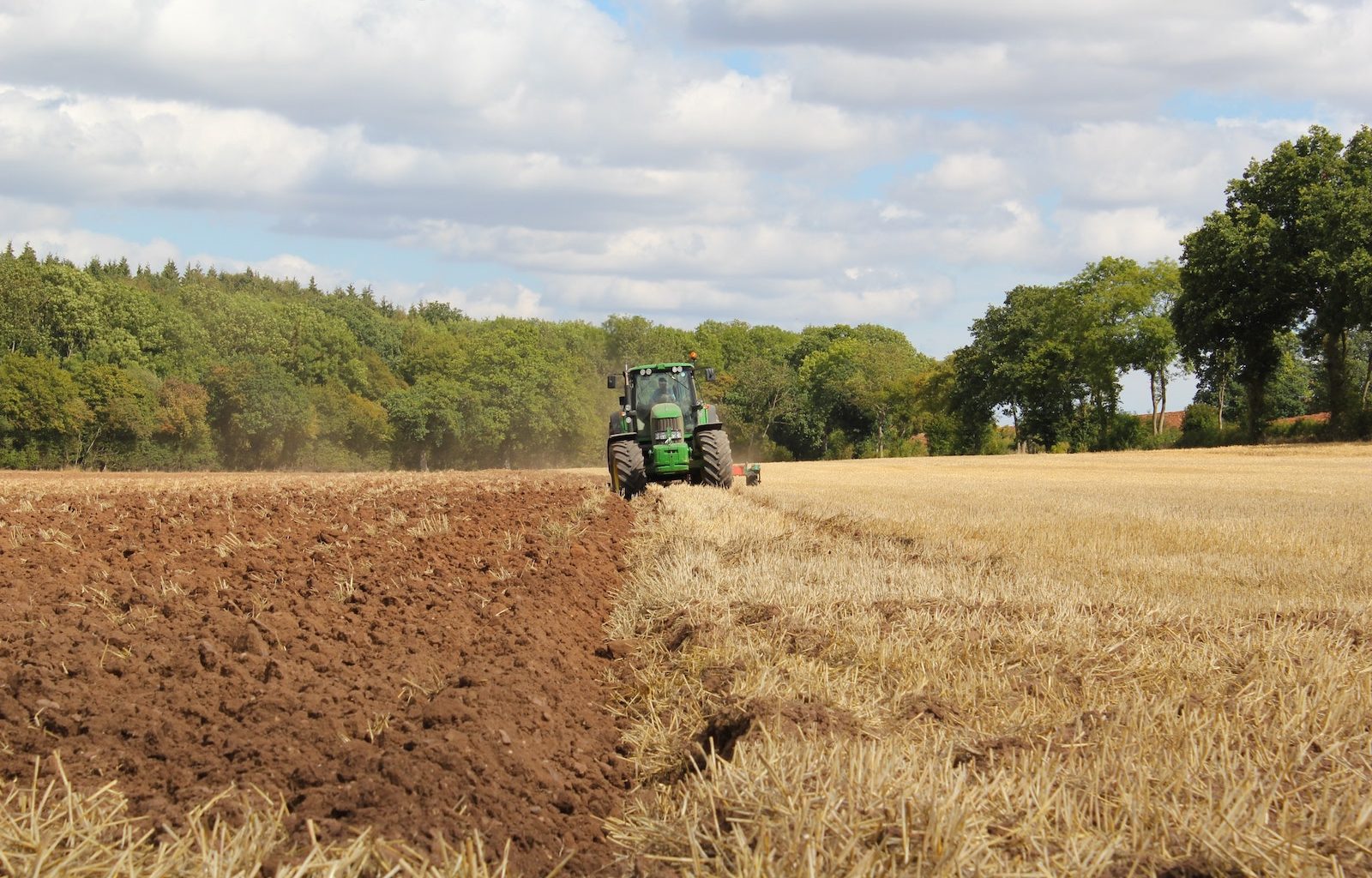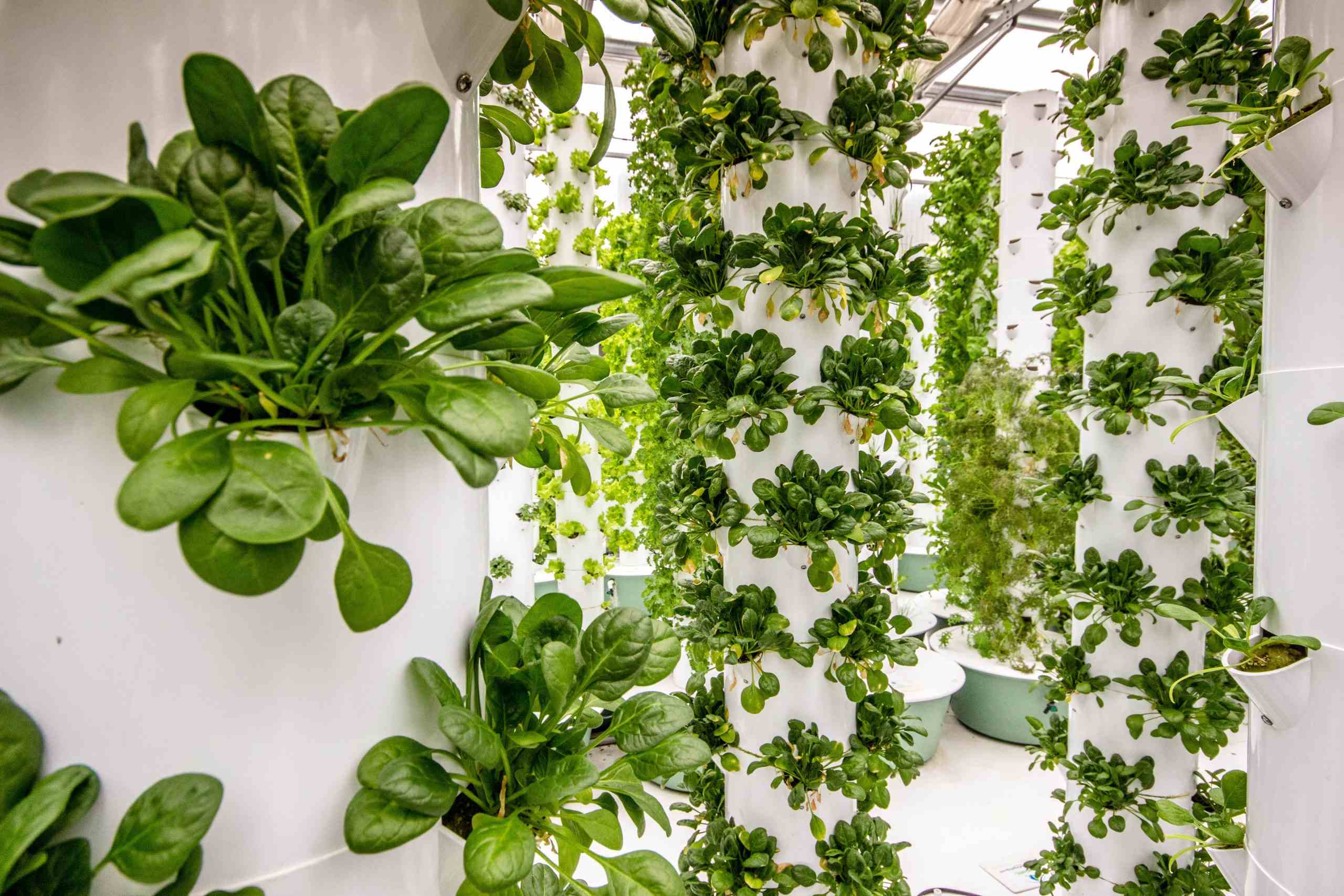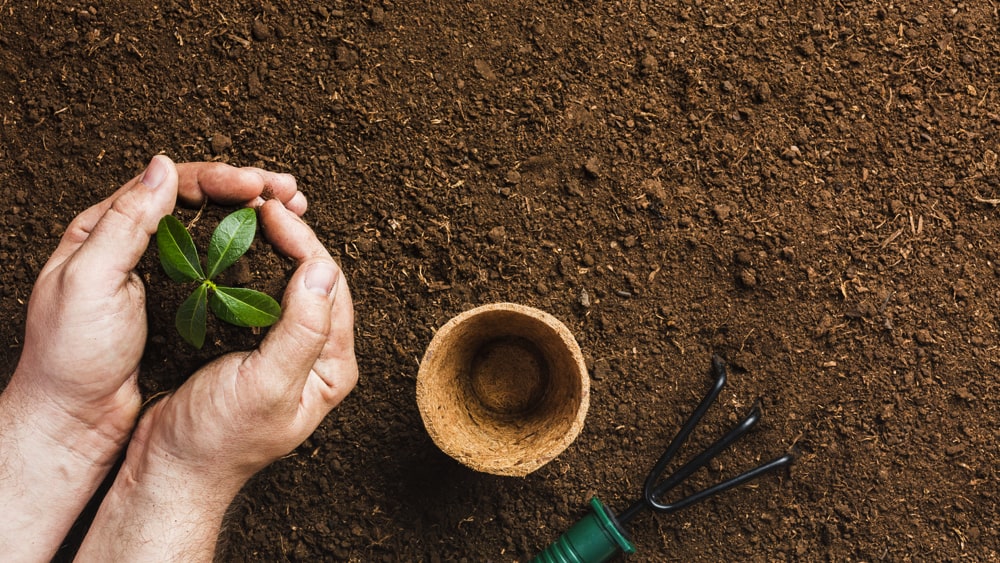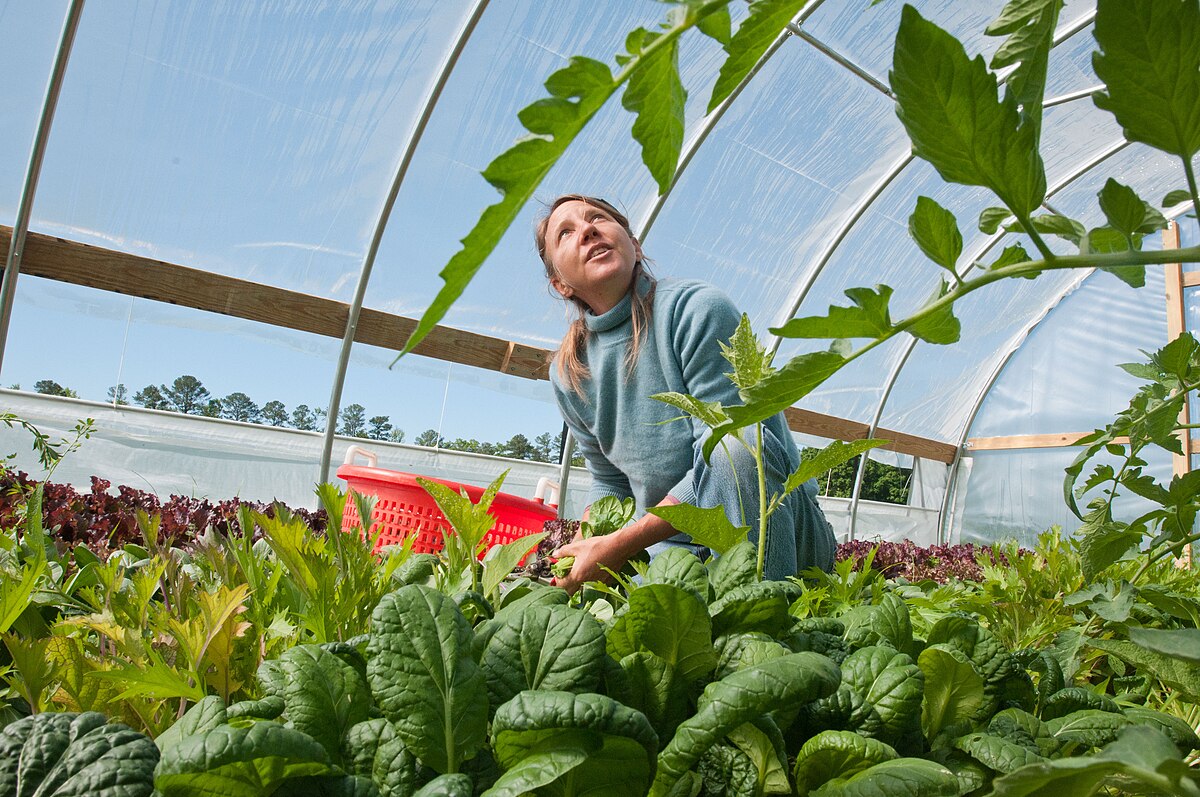Home>Gardening Tips and Tricks>Eco-Friendly Gardening>What Is The Difference Between Permaculture And Organic Farming


Eco-Friendly Gardening
What Is The Difference Between Permaculture And Organic Farming
Published: February 15, 2024
Discover the distinctions between permaculture and organic farming and learn how they both contribute to eco-friendly gardening practices. Explore the benefits and principles of each approach.
(Many of the links in this article redirect to a specific reviewed product. Your purchase of these products through affiliate links helps to generate commission for Chicagolandgardening.com, at no extra cost. Learn more)
Table of Contents
**
Introduction
**
Welcome to the world of sustainable agriculture, where innovative methods are reshaping the way we cultivate our land. In this article, we will delve into the fascinating realms of permaculture and organic farming, exploring their unique characteristics, principles, and the key distinctions that set them apart. As we embark on this journey, you will gain a deeper understanding of these two eco-friendly approaches and their significant contributions to environmental conservation and food production.
Permaculture and organic farming represent holistic and environmentally conscious practices that prioritize the well-being of the earth and its inhabitants. While both share the common goal of promoting sustainable agriculture, they embrace distinct philosophies and methodologies that distinguish them from one another. By unraveling the nuances of permaculture and organic farming, we can uncover the diverse strategies employed to nurture the land and foster a harmonious relationship between humans and nature.
Throughout this exploration, we will examine the foundational principles that underpin permaculture and organic farming, shedding light on their respective ideologies and practical applications. By illuminating the key differences and similarities between these two approaches, we aim to provide you with a comprehensive perspective on how they shape our agricultural landscapes and contribute to the global movement towards ecological sustainability. Join us on this enlightening journey as we unravel the captivating tapestry of permaculture and organic farming, celebrating their role in cultivating a greener, healthier planet.
**
Definition of Permaculture
**
Permaculture, a portmanteau of “permanent agriculture” and “permanent culture,” encompasses a holistic approach to designing sustainable systems that mimic natural ecosystems. At its core, permaculture seeks to create regenerative and self-sustaining environments that harmonize with the earth’s natural processes. This ethos extends beyond agriculture, permeating various facets of human life, including architecture, energy, and community development.
Central to the concept of permaculture is the idea of working with nature, rather than against it, to cultivate resilient and diverse ecosystems. By observing and emulating patterns found in natural systems, permaculture aims to optimize the use of resources while minimizing waste and environmental impact. This approach emphasizes the integration of plants, animals, and structures in a symbiotic manner, fostering mutually beneficial relationships within the ecosystem.
Permaculture principles are deeply rooted in sustainability, biodiversity, and ethical stewardship of the land. The design framework encompasses a range of techniques, such as agroforestry, polyculture, and water harvesting, which aim to maximize productivity while nurturing the health and vitality of the ecosystem. Additionally, permaculture promotes the concept of “closed-loop” systems, where outputs from one element serve as inputs for another, fostering a cyclical and regenerative flow of resources.
Furthermore, permaculture emphasizes the importance of community engagement and knowledge sharing, recognizing the interconnectedness of human societies with the natural world. By fostering collaborative and inclusive practices, permaculture seeks to build resilient and self-reliant communities that are attuned to the needs of the environment and future generations.
In essence, permaculture embodies a profound philosophy that transcends conventional agricultural practices, embracing a holistic and regenerative approach to land management and human interaction with the environment. By integrating ecological principles with innovative design strategies, permaculture offers a transformative vision for sustainable living that honors the intricate web of life on our planet.
**
Definition of Organic Farming
**
Organic farming represents a conscientious and ecologically sound approach to agricultural production that prioritizes soil health, biodiversity, and environmental sustainability. Rooted in the fundamental principles of organic agriculture, this method eschews synthetic pesticides, herbicides, and fertilizers, opting instead for natural and renewable resources to cultivate crops and raise livestock.
At the heart of organic farming lies a commitment to nurturing the soil as a living organism, fostering its fertility and resilience through practices such as crop rotation, composting, and the use of organic amendments. By harnessing the regenerative power of healthy soils, organic farmers aim to cultivate nutrient-rich produce while safeguarding the long-term viability of the land.
Furthermore, organic farming emphasizes the humane treatment of animals, promoting access to pasture and natural feed, and prohibiting the use of growth hormones and prophylactic antibiotics. This ethical approach to animal husbandry aligns with the principles of animal welfare and supports the natural behaviors and well-being of livestock.
Organic farming extends beyond the cultivation of food to encompass the preservation of natural ecosystems and the mitigation of environmental impact. By eschewing synthetic chemicals and adopting agroecological practices, organic farmers contribute to the conservation of biodiversity, the protection of water resources, and the reduction of greenhouse gas emissions.
Additionally, organic farming fosters transparency and traceability throughout the production and distribution chain, enabling consumers to make informed choices about the food they consume. Organic certification standards, which vary across regions, provide assurance that products have been produced in accordance with organic principles, further reinforcing the integrity of the organic label.
In essence, organic farming embodies a holistic and ecologically harmonious approach to food production, rooted in the principles of sustainability, biodiversity, and ethical stewardship of the land. By embracing natural processes and minimizing the use of synthetic inputs, organic farming offers a compelling vision for a resilient and regenerative agricultural system that nourishes both people and the planet.
Principles of Permaculture
Permaculture is guided by a set of fundamental principles that inform its holistic approach to sustainable design and land management. These principles, articulated by co-founders Bill Mollison and David Holmgren, serve as a compass for creating regenerative and self-sustaining systems that align with the patterns and resilience of natural ecosystems.
1. Observe and Interact: The first principle of permaculture emphasizes the importance of keen observation and thoughtful interaction with natural systems. By attuning to the nuances of the environment, practitioners can discern patterns, identify opportunities, and make informed decisions that align with ecological processes.
2. Catch and Store Energy: Permaculture encourages the capture and storage of energy in various forms, such as sunlight, water, and organic matter. By harnessing renewable resources, practitioners can optimize energy flows within the ecosystem, supporting diverse functions and enhancing resilience.
3. Obtain a Yield: This principle underscores the notion of generating tangible returns from the land while respecting ecological balance. Permaculture seeks to cultivate abundance through diverse and regenerative practices, ensuring that yields benefit both humans and the broader ecosystem.
4. Apply Self-Regulation and Accept Feedback: By fostering self-regulating systems and embracing feedback loops, permaculture endeavors to maintain dynamic equilibrium within the environment. This principle encourages adaptive management and continuous learning, allowing for responsive and resilient designs.
5. Use and Value Renewable Resources and Services: Permaculture advocates for the prudent utilization of renewable resources and ecosystem services, recognizing their intrinsic value in sustaining life. By prioritizing renewable inputs and ecological functions, practitioners minimize reliance on finite or depleting resources.
6. Produce No Waste: Permaculture aims to minimize waste and inefficiency by repurposing outputs as valuable inputs within the system. This principle promotes closed-loop cycles that harness the potential of all resources, fostering a regenerative and resource-efficient framework.
7. Design from Patterns to Details: Embracing a macroscopic view of the landscape, permaculture encourages designers to discern overarching patterns and relationships before delving into specific elements. By aligning with natural patterns, designs can achieve greater coherence and synergy within the ecosystem.
8. Integrate Rather Than Segregate: This principle advocates for the integration of diverse components within the system, fostering mutually beneficial relationships and optimizing functional connections. By promoting synergy and diversity, permaculture designs enhance overall resilience and productivity.
These principles form the bedrock of permaculture design, guiding practitioners in creating regenerative and harmonious systems that honor the interconnectedness of all life. By embracing these foundational tenets, permaculture offers a transformative framework for sustainable living that celebrates the wisdom of nature.
Principles of Organic Farming
Organic farming is underpinned by a set of principles that encapsulate its commitment to ecological harmony, soil health, and sustainable agricultural practices. These guiding principles serve as a compass for farmers and practitioners, shaping their approach to cultivating food in a manner that respects the environment and promotes the well-being of consumers and ecosystems alike.
1. Ecological Balance: Organic farming seeks to nurture ecological balance by promoting biodiversity, preserving natural habitats, and minimizing the disruption of ecosystems. This principle underscores the interconnectedness of all living organisms and the importance of fostering resilient and diverse landscapes.
2. Soil Health: Central to organic farming is the principle of soil health, which emphasizes the vitality and fertility of the soil as the foundation for sustainable agriculture. Practices such as crop rotation, composting, and the use of organic amendments are employed to enhance soil structure, nutrient availability, and microbial diversity.
3. Minimal External Inputs: Organic farming advocates for the reduction of external inputs such as synthetic pesticides, herbicides, and fertilizers, instead favoring natural and renewable resources to support crop growth and pest management. By minimizing reliance on external inputs, organic farmers mitigate environmental impact and promote self-sufficiency within the agricultural system.
4. Animal Welfare: This principle underscores the ethical treatment of animals raised in organic farming systems, emphasizing access to outdoor spaces, natural feed, and humane living conditions. Organic standards prioritize the well-being of livestock, prohibiting the use of growth hormones and prophylactic antibiotics.
5. Traceability and Transparency: Organic farming promotes transparency and traceability throughout the production and supply chain, enabling consumers to make informed choices about the food they consume. Organic certification standards provide assurance that products have been produced in accordance with organic principles, reinforcing consumer confidence in the integrity of organic products.
6. Responsible Water Management: Organic farming emphasizes responsible water management practices, aiming to conserve and protect water resources through efficient irrigation, water recycling, and the preservation of natural waterways and wetlands. By minimizing water usage and safeguarding water quality, organic farmers contribute to the preservation of aquatic ecosystems.
7. Continuous Improvement: Organic farming embraces the ethos of continuous improvement, encouraging farmers to engage in ongoing learning, innovation, and adaptation. This principle fosters a culture of dynamic stewardship, where practitioners strive to enhance the sustainability and resilience of their farming systems through knowledge sharing and best practices.
By upholding these foundational principles, organic farming embodies a holistic and ecologically conscious approach to food production, rooted in the principles of sustainability, biodiversity, and ethical stewardship of the land. Through the application of these principles, organic farming offers a compelling vision for a resilient and regenerative agricultural system that nourishes both people and the planet.
Key Differences Between Permaculture and Organic Farming
While permaculture and organic farming share common goals of promoting sustainable and environmentally conscious agricultural practices, they diverge in their underlying philosophies, design approaches, and holistic implications. Understanding the key differences between these two paradigms illuminates the diverse strategies employed to cultivate food and steward the land.
1. Design Philosophy: Permaculture embodies a comprehensive design philosophy that extends beyond agriculture to encompass sustainable living systems, ecological architecture, and community resilience. It integrates diverse elements, such as water management, energy efficiency, and biodiversity, to create regenerative landscapes. In contrast, organic farming primarily focuses on sustainable agricultural practices, emphasizing soil health, biodiversity, and natural inputs, without the comprehensive design framework of permaculture.
2. Scope of Application: Permaculture’s holistic approach transcends traditional farming to encompass diverse aspects of human life, including sustainable housing, renewable energy, and community development. It seeks to create self-sustaining systems that integrate human habitation with natural ecosystems. On the other hand, organic farming primarily pertains to agricultural production, with a focus on cultivating crops and raising livestock using natural inputs and ecologically sound practices.
3. Regenerative Design: Permaculture emphasizes regenerative design principles that aim to create self-sustaining and resilient ecosystems, utilizing techniques such as agroforestry, polyculture, and integrated water management. It seeks to mimic natural patterns and processes to optimize resource use and minimize environmental impact. While organic farming also promotes regenerative practices, its scope is primarily centered on sustainable agricultural production, with a focus on soil health, biodiversity, and natural pest management.
4. Community Resilience: Permaculture places a strong emphasis on community engagement, knowledge sharing, and collaborative design processes, fostering self-reliant and resilient communities that are attuned to the needs of the environment. It seeks to integrate social and ecological systems to create harmonious and regenerative living environments. Organic farming, while promoting community-supported agriculture and ethical food production, does not encompass the comprehensive community resilience and design principles inherent in permaculture.
5. Holistic Living Systems: Permaculture envisions holistic living systems that integrate diverse elements, such as food production, energy efficiency, waste management, and habitat restoration, to create regenerative and self-sustaining environments. It seeks to foster interconnected and mutually supportive relationships between humans, ecosystems, and the built environment. Organic farming, while promoting ecological practices and sustainable food production, does not encompass the comprehensive and integrated living systems approach of permaculture.
By recognizing these key differences, we gain a deeper appreciation for the unique philosophies and applications of permaculture and organic farming. While both approaches contribute to sustainable agriculture and environmental stewardship, their distinct paradigms offer diverse pathways to cultivating a greener, healthier planet.
Similarities Between Permaculture and Organic Farming
Permaculture and organic farming, despite their distinct approaches and design philosophies, share fundamental similarities that underscore their commitment to sustainable agriculture, ecological stewardship, and the well-being of the planet. By recognizing these shared principles, we can appreciate the common ground upon which these two paradigms converge in their pursuit of regenerative and holistic land management.
1. Ecological Harmony: Both permaculture and organic farming prioritize ecological harmony and the preservation of natural ecosystems. They embrace practices that promote biodiversity, soil health, and the conservation of natural resources, recognizing the interconnectedness of all living organisms and the importance of fostering resilient and diverse landscapes.
2. Natural Inputs: Both approaches eschew synthetic pesticides, herbicides, and fertilizers, opting instead for natural and renewable resources to support crop growth and pest management. By minimizing reliance on external inputs and prioritizing organic amendments, practitioners of permaculture and organic farming mitigate environmental impact and promote self-sufficiency within the agricultural system.
3. Regenerative Practices: Permaculture and organic farming embrace regenerative practices that aim to create self-sustaining and resilient ecosystems. They employ techniques such as crop rotation, composting, and agroforestry to enhance soil fertility, optimize resource use, and minimize waste, fostering a cyclical and regenerative flow of resources within the ecosystem.
4. Ethical Stewardship: Both paradigms uphold ethical stewardship of the land and the humane treatment of animals. They promote access to pasture and natural feed for livestock, prohibit the use of growth hormones and prophylactic antibiotics, and prioritize the well-being of animals within the farming system.
5. Transparency and Traceability: Permaculture and organic farming advocate for transparency and traceability throughout the production and supply chain, enabling consumers to make informed choices about the food they consume. Organic certification standards provide assurance that products have been produced in accordance with organic principles, reinforcing consumer confidence in the integrity of organic products.
6. Community Engagement: While permaculture places a strong emphasis on community engagement, knowledge sharing, and collaborative design processes, organic farming also promotes community-supported agriculture and ethical food production, fostering connections between consumers and local farming communities.
By acknowledging these shared principles, we recognize the common commitment of permaculture and organic farming to sustainable agriculture, ecological resilience, and the well-being of both people and the planet. Despite their distinct approaches, these paradigms converge in their dedication to cultivating a greener, healthier world through regenerative and holistic land management.
Conclusion
As we conclude our exploration of permaculture and organic farming, we emerge with a profound appreciation for the diverse and complementary approaches that shape sustainable agriculture and ecological stewardship. These two paradigms, while distinct in their philosophies and design methodologies, converge in their shared commitment to nurturing the earth, promoting biodiversity, and fostering resilient and regenerative ecosystems.
Permaculture, with its holistic and integrative design philosophy, envisions sustainable living systems that harmonize with natural processes, fostering self-sustaining environments and resilient communities. Its emphasis on regenerative practices, community engagement, and ecological design principles offers a transformative vision for sustainable living that transcends conventional farming.
On the other hand, organic farming, rooted in the principles of ecological balance, soil health, and minimal external inputs, represents a conscientious approach to agricultural production that prioritizes environmental sustainability and ethical stewardship. Its focus on natural inputs, responsible water management, and transparent supply chains underscores its dedication to promoting regenerative and transparent food systems.
While permaculture and organic farming exhibit distinct differences in their scope, design approaches, and holistic implications, they converge in their shared principles of ecological harmony, natural inputs, regenerative practices, ethical stewardship, and community engagement. Both paradigms embody a profound commitment to cultivating a greener, healthier planet through sustainable agriculture, ethical food production, and the preservation of natural ecosystems.
By recognizing the unique contributions of permaculture and organic farming, we honor the rich tapestry of sustainable agricultural practices that empower us to steward the land with wisdom and reverence. These paradigms offer diverse pathways for individuals, communities, and societies to cultivate a deeper connection with the earth, fostering resilience, abundance, and harmony within the intricate web of life on our planet.
As we embrace the principles of permaculture and organic farming, we embark on a collective journey towards a regenerative and harmonious future, where sustainable agriculture nourishes both people and the planet, and where the wisdom of nature guides our stewardship of the earth.










